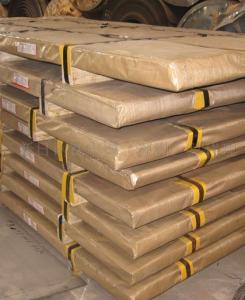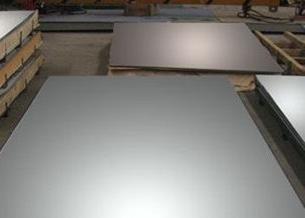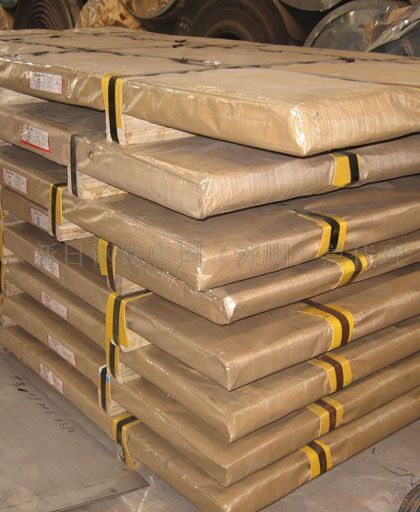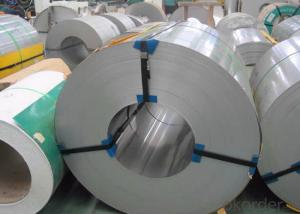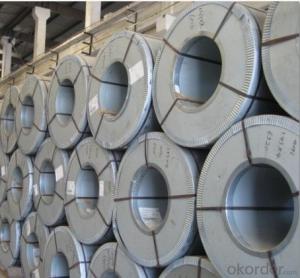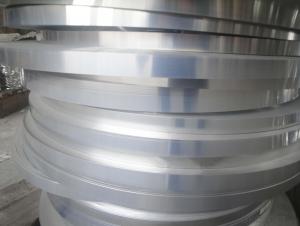Stainless Steel Sheet
- Loading Port:
- China Main Port
- Payment Terms:
- TT or L/C
- Min Order Qty:
- 1 Ton m.t.
- Supply Capability:
- 4000MT Per Month m.t./month
OKorder Service Pledge
Quality Product, Order Online Tracking, Timely Delivery
OKorder Financial Service
Credit Rating, Credit Services, Credit Purchasing
You Might Also Like
- Q: Can stainless steel strips be used in the aerospace fasteners?
- Yes, stainless steel strips can be used in aerospace fasteners. Stainless steel is known for its corrosion resistance, strength, and durability, making it a suitable material for aerospace applications that require secure and reliable fastening.
- Q: What is stainless steel strip?
- Stainless steel strip is a narrow and thin flat metal product made from stainless steel, a corrosion-resistant alloy that contains a high percentage of chromium. It is typically used in various applications such as automotive, construction, and manufacturing, due to its durability, strength, and resistance to rust and staining.
- Q: Can stainless steel strips be used in wastewater treatment plants?
- Yes, stainless steel strips can be used in wastewater treatment plants. Stainless steel is a highly durable and corrosion-resistant material, making it suitable for use in environments with high moisture and chemical exposure, such as wastewater treatment plants. Stainless steel strips can be utilized in various applications within the plant, including piping, tanks, screens, and other equipment. Additionally, stainless steel's resistance to bacterial growth and ease of cleaning makes it a hygienic choice for use in the treatment of wastewater.
- Q: Can 111 stainless steel strips be formed into seamless tubes?
- Indeed, it is possible to form seamless tubes from 111 stainless steel strips. Typically, the stainless steel strips undergo cold rolling, resulting in a circular shape, after which the edges are skillfully welded to achieve a seamless tube. This technique finds widespread application in the manufacturing industry, catering to diverse needs such as plumbing, automotive, and industrial purposes.
- Q: Are stainless steel strips easy to form and shape?
- Yes, stainless steel strips are relatively easy to form and shape due to their malleability and ductility. They can be easily bent, rolled, or manipulated into various desired shapes without losing their structural integrity.
- Q: Why does the stainless steel after processing have magnetism?
- The austenite is non-magnetic or weakly magnetic, and martensite or ferrite is magnetic, a tripod of stainless steel processing in processing time due to melting segregation or improper heat treatment, will cause a small amount of martensite Austenitic 304 stainless steel body or ferrite. In this way, 304 stainless steel will have a weak magnetic.
- Q: What kind of plastic surface friction and wear in stainless steel belt is relatively small?
- No solid modification of pure plastic on the surface of stainless steel wear is relatively small, such as polyethylene, PTFE and so on.
- Q: What are the dimensions and thicknesses available for stainless steel strips?
- The available dimensions and thicknesses for stainless steel strips differ based on the specific requirements and application. The widths of stainless steel strips commonly range from 1/2 inch to 48 inches, while the thicknesses vary from 0.001 inch to 0.1875 inch. It is important to keep in mind that these dimensions can be tailored to meet the specific needs of a project. Specialized applications may even offer wider or thicker stainless steel strips from certain manufacturers. Moreover, the length of stainless steel strips can vary, typically ranging from a few feet to hundreds of feet, depending on the supplier and customer requirements. To determine the precise dimensions and thicknesses available for stainless steel strips for your specific project, it is always advisable to consult with a stainless steel supplier or manufacturer.
- Q: Are stainless steel strips resistant to chlorine attack?
- Indeed, stainless steel strips exhibit resistance against chlorine attack. Stainless steel is renowned for its exceptional corrosion resistance and can endure exposure to chlorine and other corrosive substances. This resistance stems from the inclusion of chromium in stainless steel, which generates a protective layer on its surface when exposed to oxygen. Consequently, this layer prevents the metal from reacting with chlorine or other corrosive agents. Given their remarkable resistance to chlorine attack, stainless steel strips find widespread usage in numerous industries that involve contact with chlorine. These industries include water treatment plants, swimming pools, and chemical processing facilities.
- Q: Can stainless steel strips be cold rolled?
- Indeed, cold rolling is feasible for stainless steel strips. During this procedure, the stainless steel strip undergoes passage through a series of rollers at ambient temperature, resulting in a reduction in thickness and an enhancement of its surface finish. Cold rolling finds frequent application in the manufacturing of stainless steel strips due to its capability to bolster their strength, hardness, and dimensional precision. Furthermore, this versatile process enables the formation of stainless steel strips in varied shapes and sizes, thereby contributing to its significance in the stainless steel industry.
Our company can provide stainless steel horizontal shear, slitting, CNC plasma cutting, sanding, 8K, oil mill, anti-fingerprint, embossed, red flowers, spare parts and other supporting services, and provide customized integration services to meet all customer needs.we have more than 10 years history, and have long maintained good cooperative relations with well-known domestic partners.
1. Manufacturer Overview
| Location | Wuxi,China |
| Year Established | 2000 |
| Annual Output Value | Above US$16 Million |
| Main Markets | Chinese, Europe,South Africa |
| Company Certifications | ISO9001:2000; |
2. Manufacturer Certificates
| a) Certification Name | |
| Range | |
| Reference | |
| Validity Period |
3. Manufacturer Capability
| a) Trade Capacity | |
| Nearest Port | Shanghai |
| Export Percentage | 30% |
| No.of Employees in Trade Department | 50 People |
| Language Spoken: | English;Chinese |
| b) Factory Information | |
| Factory Size: | Above 80,000 square meters |
| No. of Production Lines | Above 7 |
| Contract Manufacturing | OEM Service Offered;Design Service Offered |
| Product Price Range | Average |
Send your message to us
Stainless Steel Sheet
- Loading Port:
- China Main Port
- Payment Terms:
- TT or L/C
- Min Order Qty:
- 1 Ton m.t.
- Supply Capability:
- 4000MT Per Month m.t./month
OKorder Service Pledge
Quality Product, Order Online Tracking, Timely Delivery
OKorder Financial Service
Credit Rating, Credit Services, Credit Purchasing
Similar products
Hot products
Hot Searches
Related keywords
